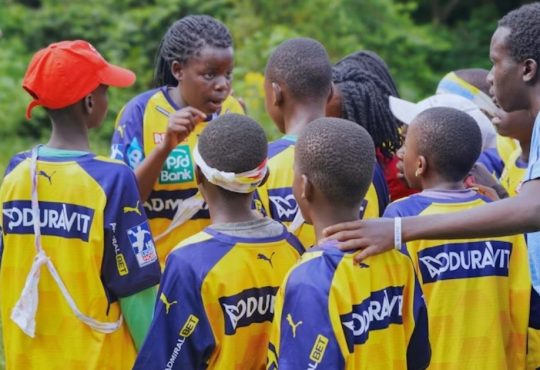In sports, a true legend isn’t just defined by stats or trophies—but by how they bounce back when everything falls apart. These athletes faced career-threatening injuries, personal crises, and even life-or-death situations. But instead of staying down, they fought harder, trained smarter, and silenced every doubt. Here are the most powerful comeback stories in sports history—because sometimes, the greatest victories are the ones no one expected.
The Greatest Sports Comebacks of All Time
1. Tiger Woods
For more than a decade, Tiger Woods ruled the fairways as golf’s ultimate showstopper—capturing majors with unmatched swagger, razor-sharpuled the fairways as golf’s ultimate showstopper—capturing majors with unmatched swagger, razor-sharp precision, and an ironclad mental game. But his world came crashing down in 2009 when personal scandals made global headlines. What followed was a turbulent period of public scrutiny, emotional turmoil, and a body that seemed to betray him. Multiple knee and back surgeries—including a spinal fusion—left many wondering if he’d ever walk without pain, let alone swing a golf club again.
From 2014 to 2017, Woods played only a handful of events and often looked like a shadow of his former self. The pain was so severe that he admitted struggling to get out of bed or play with his kids. In 2017, he was arrested for driving under the influence—a stark, stark, sobering moment that feltfelt like the closing scene of a once-legendary career coming apart at the seamsclosing scene of a once-legendary career coming apart at the seams.
And yet, Tiger didn’t quit. With fierce discipline and a quiet determination, he underwent intense rehab and training, slowly rebuilding his game—and his life. Then came April 2019. At 43 years old, wearing his iconic red shirt on a Sunday at Augusta National, Tiger delivered one of the greatest comebacks in sports history by winning The Masters. The final putt dropped, and the gallery erupted—not just in celebration, but in sheer awe. His children rushed into his arms, echoing the unforgettable embrace he shared with his late father after winning his first Masters in 1997—a full-circle moment steeped in emotion and legacy.
It was more than just a golf victory. It was redemption. It was proof that failure doesn’t define a person—resilience does. Tiger Woods didn’t just return to the game; he reminded the world why he changed it in the first place.
2. Serena Williams
Serena Williams, long established as a titan of tennis, entered a whole new battlefield in 2017—this time not on the court, but in the delivery room. Trading her racket for resilience, she confronted one of the most daunting challenges of her life: surviving childbirth complications with the same fearless determination that made her a legend. While giving birth to her daughter, Olympia, Serena suffered life-threatening complications, including a pulmonary embolism and multiple surgeries. What was meant to be one of the happiest moments of her life quickly became a battle for survival.
For most, simply recovering from such trauma would be enough. But for Serena, that wasn’t the end of the story—it was just the start of a different kind of comeback. Less than a year after giving birth, she returned to Grand Slam competition, not only as a powerhouse athlete but also as a new mother juggling sleepless nights, self-doubt, and an ever-scrutinising public eye.
Between 2018 and 2019, she reached four major finals—Wimbledon and the US Open twice—proving she was still a fierce competitor despite the challenges of postpartum recovery and limited time on tour. Although she didn’t capture that elusive 24th Grand Slam title to tie Margaret Court, Serena’s comeback was about more than records. It was about redefining what it means to be a mother, an athlete, and an icon—all at once.
Off the court, Serena also became a vocal advocate for Black maternal health, gender equity in sports, and mental wellness. She wasn’t just making a statement with her racquet—she was using her platform to empower and educate. Whether serving aces or speaking truth, Serena Williams showed that power isn’t just physical—it’s personal, emotional, and deeply inspiring.
3. Alex Smith
In November 2018, during what seemed like a routine NFL game, Washington quarterback Alex Smith took a hit that would change his life. The outcome was a brutal compound fracture to his right leg—both the tibia and fibula snapped in a harrowing, hard-to-watch break. At first, it looked like just another devastating sports injury. But within days, things spiraled into something far more serious.
Smith developed a flesh-eating bacterial infection (necrotizing fasciitis) that nearly took his leg—and could have taken his life. Doctors performed 17 surgeries to save him, at one point even considering amputation. For months, Smith wore an external fixator that resembled scaffolding more than a medical device. Walking again was the initial goal. Football wasn’t even in the conversation.
But for Alex Smith, giving up wasn’t an option. He quietly began rehabbing, pushing through excruciating pain and physical therapy milestones most would never dare attempt. And then came the unthinkable: in 2020, almost two years after that devastating injury, Smith was medically cleared to step back onto the football field. When he stepped onto the field for Washington—helmet on, jersey crisp, nerves likely steel-plated—he wasn’t just playing a game. He was redefining what it means to push the limits of human perseverance.
He went on to start six games that season, helping Washington reach the playoffs and earning the 2020 NFL Comeback Player of the Year award in what felt like a no-contest. His return wasn’t about stats or touchdowns—it was about grit, resilience, and inspiring millions who saw his journey. Alex Smith didn’t just come back—he reminded us what bravery looks like under pressure, and what happens when the human spirit refuses to quit.
4. Klay Thompson
In the summer of 2019, Golden State Warriors sharpshooter Klay Thompson suffered a brutal ACL tear in Game 6 of the NBA Finals, capping off an already exhausting postseason with heartbreak. While fans braced for a year-long recovery, hope remained high that he’d return with his signature precision and shooting finesse. But just as he was on the verge of a comeback in 2020, tragedy struck again—this time, a torn Achilles during a pickup game. Another season gone, and another uphill battle began.
The back-to-back injuries kept Klay off the court for 941 days. That’s nearly two and a half years without a single NBA minute, a basketball eternity. During that stretch, the Warriors sat out the playoffs, the balance of power in the NBA shifted, and the league underwent a full-blowan evolution. Many quietly wondered if Klay—known for his catch-and-shoot magic and elite defense—would ever be the same. After all, those weren’t just minor setbacks. These were the kind of injuries that end careers or permanently dim a player’s spark.
But if there’s one thing Klay Thompson never lost, it was belief. Belief in himself, belief in the work, and belief in the game he loved. When he finally returned to the court in January 2022, it was emotional—for fans, for teammates, and especially for Klay. He didn’t just ease back into things. He dropped 17 points in his debut and gradually found his rhythm, his shot, and his swagger. By June, he was helping the Warriors clinch their fourth championship of the Steph-Klay-Draymond era—his first since 2018.
More than just a comeback, Klay’s journey became a celebration of patience, resilience, and that sweet, poetic moment when hard work pays off. He reminded the league—and himself—that true shooters don’t forget how to splash. They just reload.
5. Bethany Hamilton
In October 2003, 13-year-old Bethany Hamilton was living the dream of any young surfer—catching waves under the Hawaiian sun with friends by her side and a future in competitive surfing gleaming ahead. Then, in a split second, that dream nearly ended. Off the coast of Kauai, a 14-foot tiger shark attacked with terrifying force, severing her left arm just below the shoulder in a life-altering instant. With over 60% of her blood gone, she was rushed to the hospital, hanging on by a thread.
For most people, that kind of trauma would mean the end of a surfing career. For Bethany, it was just the beginning of something bigger. Remarkably, she was back on a surfboard less than a month later. With a specially adapted board and a fierce determination, she relearned how to paddle, pop up, and balance—all with one arm. Her return wasn’t just a personal milestone—it was an international headline and a spark of inspiration for millions around the world.
Bethany didn’t just return to surfing—she competed and excelled, earning top finishes in national and international events, including the World Surf League. Beyond the waves, she became an author, speaker, and the inspiration behind Soul Surfer. What truly sets her apart is the unshakable joy, grit, and faith she brings to it all. She never saw herself as a victim—only as a surfer, turning every setback into a powerful comeback.
Bonus Mentions – Legends Who Redefined the Sports Comebacks
Lance Armstrong – The Rise Before the Fall
Long before controversy clouded his legacy, Lance Armstrong’s comeback from cancer was nothing short of jaw-dropping. Diagnosed in 1996 with stage three testicular cancer that had spread to his brain and lungs, doctors gave him less than a 50% chance of survival. Yet within two years, Armstrong not only beat the disease—he returned to professional cycling and began what would become one of the most dominant runs in sports history.
He won seven consecutive Tour de France titles from 1999 to 2005, becoming a symbol of hope, resilience, and the power of human will. His Livestrong Foundation raised millions for cancer research and patient support. While later stripped of his titles due to doping revelations, the raw courage it took to battle back from near-death and compete at the sport’s highest level still stands as a remarkable feat. Armstrong’s story is complicated—but his comeback from cancer remains a chapter of undeniable human strength.
George Foreman – The Knockout King at 45
George Foreman wasn’t just retired—he was practically a sports ghost. After losing to Jimmy Young in 1977, the former heavyweight champion stepped away from boxing and became a preacher. For a full decade, he didn’t throw a single punch professionally. But in the late 1980s, Foreman did the unthinkable: he came back to the ring, older, heavier, and grinning from ear to ear.
Many dismissed it as a gimmick—but Foreman’s power and patience were undeniable. At 45, he stunned the boxing world by knocking out 26-year-old Michael Moorer in 1994, becoming the oldest heavyweight champion in history—a record still unbroken. More than just a title, his comeback was a testament to faith, reinvention, and the timeless power of second chances.
Naomi Osaka – Championing Mental Health, Not Just Titles
Naomi Osaka may be one of the most quietly revolutionary figures in modern sports. After winning four Grand Slam titles at a young age and becoming the face of a new generation of tennis, Osaka made headlines in 2021 for a different reason: stepping away from competition to protect her mental health. At the height of her fame, she chose peace over pressure—a move that challenged the long-standing “push through” culture of elite athletics.
Naomi Osaka’s candidness about her struggles with anxiety, depression, and burnout ignited a worldwide conversation on mental health in sports, pushing athlete well-being to the forefront like never before. Her hiatus from the sport wasn’t a retreat—it was a powerful act of self-advocacy. She returned in 2024, not just as a player, but as a mother and a role model leading a more balanced and intentional path forward. Naomi’s comeback isn’t just about rankings—it’s about reshaping what it means to win, and reminding us that sometimes the bravest thing you can do is step back.
Stronger Than Before
Comebacks aren’t just about recovering—they’re about rewriting the script. These athletes didn’t just return to their sport; they returned stronger, smarter, and with stories that continue to inspire fans worldwide. Because sometimes the greatest legacy isn’t being unbeatable—it’s refusing to be broken.





